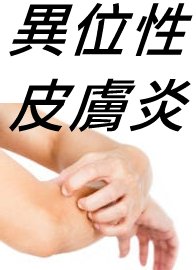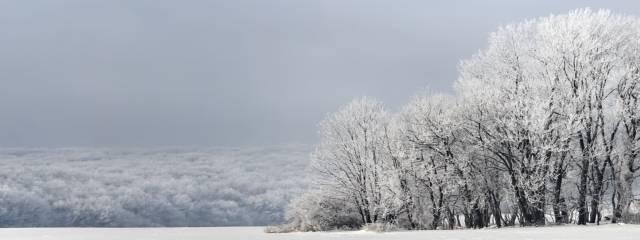| common name | Kusnezoff Monkshood Root |
| alias | Kusnezoff Monkshood Root |
| family | Ranunculaceae |
In the northern regions of the mainland, the primary source is the Japanese Buttercup Herb family plant, Northern Aconite Mother Root (Aconitum Kusnezoffii Reochb.), while in the southern regions, it is mainly derived from the tuberous roots of Aconite Mother Root. The Kusnezoff Monkshood Root used in the market is all wild, distributed in provinces and regions such as Heilongjiang, Jilin, Liaoning, Hebei, Shanxi, and Inner Mongolia.
The Kusnezoff Monkshood Root referred to in various historical periods is mainly the wild variety of Aconite Mother Root, primarily the wild species of Aconite Mother Root (Aconitum carmichaeli Debx.) based on its origin, Li Shi-zhen referred to as the Huai Aconite Mother Root from the north of the Yangtze River; in addition, it also includes the Northern Aconite Mother Root.
bubble_chart Morphological Characteristics
The root is conical, about 1.5-5 cm long and 1.5-3.5 cm in diameter. The surface is gray-brown with fine longitudinal wrinkles, and the upper end has a depressed bud scar surrounded by several tumor-like raised branch roots, commonly known as "nail horns." The side retains the mark of separation from the mother root. The texture is firm, and the cross-section is gray-white, powdery, with a 5-7 angled or irregular cambium ring visible. The taste is pungent and numbing.
Heishun slices are longitudinal slices, wider at the top and narrower at the bottom, 4-5 cm long, 1-3.5 cm wide, and about 3-5 mm thick. The outer skin is dark brown or gray-brown, and the cut surface is brown-yellow and semi-transparent. There are longitudinal vascular bundles. The texture is hard and brittle. The odor is slight, and the taste is mild.
bubble_chart Properties and MeridiansExtremely hot, acrid and bitter, extremely toxic. Act on heart, liver, kidney and spleen meridians.
Restoring yang to save from collapse, tonifying fire and assisting yang, dispelling wind, eliminating dampness, warming meridians and dissipating cold, relieving pain.
Used for yang exhaustion, collapse, cold limbs and faint pulse, impotence, uterine cold, cold vomiting and diarrhea, pudendal coldness and edema, yang deficiency with external contraction, wind-cold-dampness impediment, cold pain or numbness and paralysis in limbs and joints, cold pain in the chest and abdomen, cold abdominal colic, traumatic pain, and has anesthetic and analgesic effects. For external use in treating scabies and ringworm.
Processing of materia medica: 1.4-4.5g, should be decocted first and boiled for a long time. For external use, apply an appropriate amount by grinding into powder and applying to the affected area or boiling in water for washing. Raw products should be taken orally with caution, generally used after processing of materia medica.
bubble_chart Cautions and Contraindications
Pregnant women should avoid taking it. Contraindicated with Pineilia, Trichosanthis Fruit, Japanese Ampelopsis Root, Common Bletilla Pseudobulb, Tendrilleaf Fritillary Bulb, and Thunberg Fritillary Bulb; incompatible with Rhinoceros Horn. Not suitable for long-term use; raw products are for external use only.
bubble_chart Modern Pharmacology
The raw product contains highly toxic diester alkaloids such as Aconite Mother Root alkaloid (aconitine), mesaconitine, and hypaconitine. It also contains higenamine, which has a cardiotonic effect, and coryneine chloride, which has a hypertensive effect, as well as salsolinol.
- Preparations of raw kusnezoff monkshood root, Aconite Mother Root alkaloid, and hypaconitine all have analgesic effects on pain responses induced by electrical stimulation of the mouse tail or the hot plate method. The total alkaloids of Aconite Mother Root have anti-inflammatory effects on rabbit ear swelling caused by heat and experimental peritonitis in mice. Clinically, kusnezoff monkshood root is made into an injection containing 2mg of total alkaloids per 2ml, administered intramuscularly or in combination with other medications to treat wind-dampness arthritis, lumbago and leg pain, and neuralgia.
- Aconite Mother Root alkaloid stimulates the sensory nerve endings of the skin membrane, causing itching and a sensation of heat, followed by inhibition and local anesthesia. Clinically, raw kusnezoff monkshood root is used with other drugs to make a tincture for surface anesthesia; or the raw drug is applied externally in a plaster, providing anesthetic and analgesic effects.
- Processed kusnezoff monkshood root has a cardiotonic effect similar to Aconite Lateral Root.
- The unprocessed raw kusnezoff monkshood root is highly toxic, and ingestion of more than 0.3g can often cause toxicity, so it is generally not taken internally; only processed products are used for internal consumption. After processing, the toxicity to mice is significantly reduced. For example, the median lethal dose (LD50) of raw Aconite Mother Root for mice (intraperitoneal injection) is 0.19g/kg, while after processing, it is 6-10g/kg.
- Nervous system: Numbness of the mouth, tongue, limbs, and whole body, with a tight sensation, dysphoria, dizziness, headache, confusion; loss or weakening of pain sensation, convulsions; or blindness.
- Digestive system: Severe vomiting, nausea, salivation, abdominal pain, diarrhea, hyperactive borborygmus.
- Circulatory system: Flusteredness, palpitation, drop in blood pressure, arrhythmia, even cyanosis, cold limbs. Severe arrhythmia or circulatory and respiratory failure is the main cause of death.
- Early gastric lavage.
- Intravenous infusion of glucose injection and glucose saline. Pay attention to warmth and respiratory conditions.
- Use the antagonist atropine until the heart rhythm returns to normal.
- Folk remedies include decoction of Fresh Ginger Rhizome and Liquorice Root, 15g each, with Lonicera 18g. Or decoction of Mung Bean 120g and Liquorice Root 30g, taken frequently. Raw white honey also has some detoxifying effect.
bubble_chart Other Related Items







